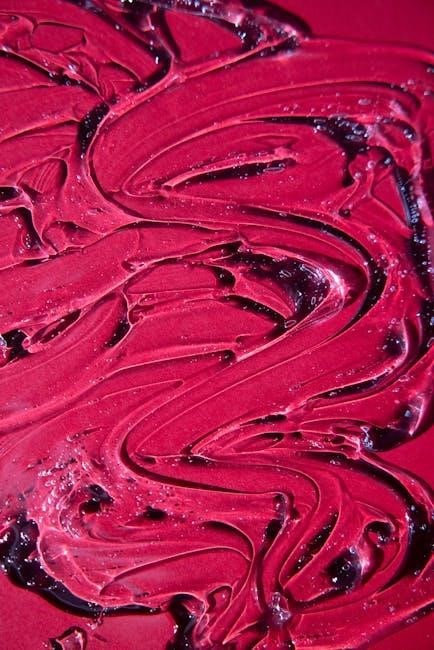tint guide

Welcome to our comprehensive guide on window tinting! This resource covers everything from understanding tint basics to legal considerations and maintenance tips. Discover how window tints enhance style‚ functionality‚ and comfort while ensuring compliance with regulations. Perfect for car enthusiasts and newcomers alike!
Understanding Window Tints
Window tints are thin‚ adhesive films applied to glass surfaces to reduce sunlight transmission. The darkness of a tint is measured by its Visible Light Transmission (VLT) percentage‚ with lower percentages indicating darker tints. For instance‚ a 50% VLT allows half the visible light to pass through‚ offering a subtle appearance and excellent visibility. Tints serve multiple purposes‚ including reducing glare‚ blocking UV rays‚ enhancing privacy‚ and improving aesthetics. They are commonly used on car windows but are also applied to residential and commercial glass for energy efficiency and style. Understanding VLT is crucial for selecting the right tint‚ as it directly impacts visibility and the level of protection provided. Always consider the intended use and local regulations when choosing a tint percentage for your needs.
Benefits of Window Tinting
Window tinting offers numerous benefits‚ making it a popular choice for vehicles and buildings. It reduces heat entering through windows‚ keeping interiors cooler and improving energy efficiency. Tints block UV rays‚ protecting occupants from harmful sunlight and preventing fading of interiors. Enhanced privacy is another advantage‚ as tinted windows make it harder for outsiders to see inside. Additionally‚ tints reduce glare from sunlight or headlights‚ improving visibility while driving. They also add a stylish‚ modern appearance to windows. In case of glass shattering‚ tint film holds fragments together‚ reducing the risk of injury. Overall‚ window tinting is a practical and aesthetic upgrade that enhances comfort‚ safety‚ and style for both cars and structures. It’s a versatile solution for addressing multiple needs simultaneously.

Types of Window Tints

Window tints vary by material and darkness‚ offering options like dyed‚ metallic‚ and ceramic films. Percentages range from 5% to 70%‚ catering to different needs for privacy‚ UV protection‚ and visibility.
Different Tint Percentages and Their Effects
Window tint percentages‚ measured by VLT (Visible Light Transmission)‚ determine how much light passes through. Lower percentages mean darker tints‚ offering more privacy and heat reduction but less visibility. A 5% tint is nearly opaque‚ ideal for rear windows‚ while 50% allows half the light in‚ maintaining visibility. Common choices include 35% for a balance of aesthetics and functionality‚ and 70% for minimal tinting. Each percentage impacts glare reduction‚ UV protection‚ and interior cooling‚ so choosing the right one depends on personal preferences and legal limits. Always check local regulations to ensure compliance with VLT requirements for front and rear windows.
Materials Used in Window Tints
Window tints are made from specialized films applied to glass surfaces. Common materials include dyed‚ metalized‚ and ceramic films. Dyed films are the most affordable‚ offering basic UV protection and privacy but may fade over time. Metalized films incorporate metallic particles‚ enhancing heat rejection and durability while providing a reflective appearance. Ceramic films are premium‚ offering superior UV protection‚ heat reduction‚ and glare control without blocking GPS or radio signals. Hybrid options combine materials for tailored performance. Each material caters to different needs‚ from aesthetics to functionality‚ ensuring a wide range of choices for drivers. Understanding these materials helps in selecting the best tint for your vehicle.

Legal Considerations

Understanding window tint laws is crucial to avoid penalties. Regulations vary by location‚ so knowing your area’s legal standards ensures compliance and prevents potential fines or violations. Stay informed to stay safe.
Window Tinting Laws and Regulations
Window tinting laws vary by location and are designed to ensure driver safety and visibility. Front side windows typically require a higher Visible Light Transmission (VLT) percentage‚ while rear windows can have darker tints. Windshields often have restrictions on how much tint can be applied. Penalties for violating these laws include fines and‚ in some cases‚ mandatory removal of the tint; It’s essential to check local regulations before installing window tints to avoid legal issues. Many states specify minimum VLT percentages for different windows‚ so researching your area’s specific laws is crucial. Always consult your local DMV or law enforcement for accurate and up-to-date information to ensure compliance and avoid potential penalties. Proper adherence to these regulations ensures both safety and legal compliance for drivers.

Penalties for Violating Tint Laws

Violating window tint laws can result in fines‚ which vary by jurisdiction. In some areas‚ drivers may face penalties ranging from $50 to $500 or more‚ depending on the severity of the violation. Additionally‚ law enforcement may require the removal of non-compliant tint‚ which can incur extra costs. Repeat offenses may lead to higher fines or even points on a driver’s license. In extreme cases‚ penalties can include community service or other legal consequences. It’s crucial to adhere to local regulations to avoid these penalties. Always check the specific laws in your state or region to ensure compliance and prevent financial or legal repercussions; Remember‚ compliance with tint laws is essential for avoiding penalties and maintaining a clean driving record.

Installation and Maintenance
Proper installation ensures durability and effectiveness. Clean the window thoroughly‚ measure and cut the film‚ then apply it smoothly. Regular maintenance involves avoiding harsh cleaners and promptly addressing bubbles or peeling.

Step-by-Step Guide to Tinting Windows
Tinting windows is a manageable DIY project if done correctly. Begin by thoroughly cleaning the window to ensure a dust-free surface. Next‚ measure the window dimensions and cut the tint film slightly larger than needed. Apply a water and soap solution to the window and film for easy positioning. Carefully place the film‚ aligning it with the window edges. Use a squeegee to remove air bubbles and excess water‚ starting from the center and working outward. Trim the excess film with a utility knife. Allow the film to dry completely before inspecting for any remaining bubbles or imperfections. Proper installation ensures a professional finish and long-lasting results.
Tips for Maintaining Window Tints
To keep your window tints looking their best‚ regular maintenance is essential. Avoid using harsh chemicals‚ abrasive cleaners‚ or ammonia-based products‚ as they can damage the film. Instead‚ clean the tint with a mild soap solution and a soft microfiber cloth‚ wiping in a horizontal direction to prevent streaks. Avoid using high-pressure washes‚ which can dislodge the film. Park your vehicle in shaded areas whenever possible to reduce exposure to direct sunlight‚ which can cause fading over time. For added protection‚ apply a UV-blocking window treatment. Inspect the tint periodically for bubbles or peeling edges and address these issues promptly to prevent further damage. If repairs are needed‚ consider consulting a professional to ensure the tint remains effective and visually appealing. Proper care will extend the durability of your window tint and preserve its appearance.

Choosing the Right Tint
Selecting the perfect window tint involves considering factors like visible light transmission (VLT)‚ UV protection‚ heat reduction‚ and aesthetic preferences. Ensure compliance with local laws to avoid penalties and choose a tint that balances functionality with style for optimal results.
Factors to Consider When Selecting Window Tints
When choosing window tints‚ consider visible light transmission (VLT)‚ UV protection‚ heat reduction‚ and privacy needs. Lower VLT percentages mean darker tints‚ offering more privacy but reducing visibility. Higher VLT options‚ like 50% or 70%‚ allow more light while still providing UV protection. Materials vary‚ with ceramic tints offering superior heat rejection and dyed films being more budget-friendly. Aesthetic preferences‚ such as mirrored or neutral tones‚ also play a role. Additionally‚ ensure compliance with local laws‚ as front windshield and side window VLT limits vary by region. Climate is another factor; darker tints are beneficial in hotter areas for heat reduction. Lastly‚ consider the vehicle’s purpose—daily commuting vs. recreational use—and brand reputation for durability and warranty. Balancing these factors ensures the right tint for functionality‚ style‚ and legal compliance.